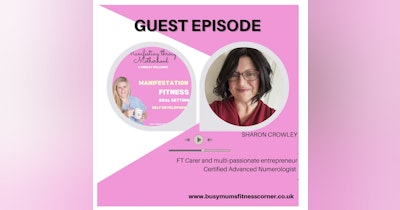https://www.busymumsfitnesscorner.co.uk/
Understanding Seasonal Affective Disorder (SAD): and beating the winter Winter Blues
As the days grow shorter and the nights longer, some individuals find themselves grappling with a shift in mood that goes beyond the typical winter blues. This phenomenon is known as Seasonal Affective Disorder or SAD. Let's delve into the depths of this condition, exploring its causes, symptoms, and potential coping strategies. It is common to experience this because it feels like as soon as summer ends, we jump into Autumn and before we know it the nights draw in darker and we start to enter inside our homes earlier and start to embrace the hibernation feeling. I know for me my curtains are closed early at home, heatings on, PJs on. When I pick my son up from school it is dull and dreary with grey skies and cold air on our faces, it almost feels like summer was so long ago. Our bodies have to acclimatise to these conditions and for some, it can be daunting, especially if you are a social butterfly.
The Seasonal Shift:
SAD typically manifests during the fall and winter months when sunlight exposure decreases. This seasonal change disrupts our circadian rhythm and may lead to hormonal imbalances, particularly affecting serotonin and melatonin levels. Serotonin, known as the "feel-good" neurotransmitter, plays a crucial role in regulating mood, while melatonin influences sleep patterns. We certainly feel the sudden shift in our mood and have to find coping mechanisms to boost our overall being. We suddenly have to keep warm and lose motivation for certain activities.
Recognizing the Symptoms:
Individuals experiencing SAD often exhibit symptoms akin to major depressive disorder. These may include persistent sadness, low energy, changes in sleep patterns, difficulty concentrating, and even weight gain due to increased cravings for carbohydrates. The key factor is the cyclical nature of these symptoms, recurring seasonally. When we are feeling low we can start to emotionally eat, and of course in the winter months our food choices do differ from those summer salads. We like to carb store, eating wintery hot foods gives us that rush of comfort and a safe feeling. I love winter months of stews, hot dinners and delicious soups with crusty bread, but the danger zones we fall into can be less inactivity, fewer steps, fewer movements, and less motivation to go to the gym or a workout class. As long as we are vigilant through these winter months we can pull it back as quickly as we can and start implementing a new winter plan to adapt our meal and fitness planning.
Shedding Light on Causes:
Limited exposure to natural sunlight is a primary contributor to SAD. Sunlight stimulates the production of vitamin D, which is essential for overall well-being. The reduction in sunlight during the fall and winter months can disrupt the body's natural balance, potentially triggering depressive symptoms.
Who's at Risk?
While anyone can experience SAD, certain factors may increase susceptibility. Individuals living far from the equator, where daylight hours decrease significantly in winter, are more prone to developing SAD. Additionally, those with a personal or family history of depression may be at a higher risk. But anyone can develop SAD, especially if it has been a tough year and you may have experienced a recent loss or break up, the winter months could make us feel somewhat low and lonely, and external factors like being unhappy in a job, money issues or relationship troubles could fear us being in our homes for months and bring in sudden dread. So no one is exempt, from past experience, my Nanna struggled with this, especially before she moved into her new care home, she now has more company, and daily room visits which bring distractions and keeps her occupied. Loneliness is real and with the added weather change you see fewer people out and about for that company or just general human interaction.
Coping Strategies:
Light therapy, or phototherapy, involves exposure to a bright light that mimics natural sunlight. This can help regulate mood and alleviate symptoms. It's essential to consult a healthcare professional before starting light therapy to ensure its appropriateness. We now have online communities and hotlines which can support you through this SAD time. Journalling can help or even a good film series to keep you busy. I enjoy doing some home workouts, attending online Zoom meet-ups, or hot baths and my favourite is my heated blanket.
Engaging in physical activity releases endorphins, which can counteract feelings of sadness and improve overall mood. Incorporating exercise into the daily routine, set a new winter goal to see you through to the warmer months. Sometimes it's good to set a new challenge of some kind to keep you focused.









